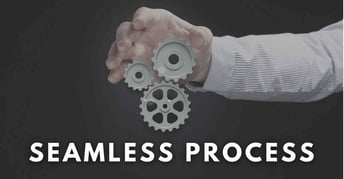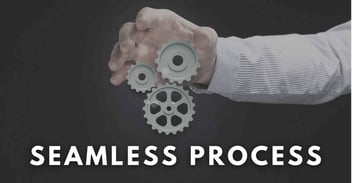Core Concepts of Modern Auto Retailing


You've probably heard it time and time again: how you sell cars is changing. Today, buyers expect a different experience than what your parents and grandparents expected. Changing customer behavior and expectations dictate that dealers must take advantage of new selling methods and tools to streamline their process and find ways to connect with customers in new and meaningful ways.
However, engaging customers on a deeper level isn't purely about building digital relationships. Modern auto retailing is at its core, a multi-step process that requires a minimum of 6 interactions, and a multi-channel process that requires sales reps to effectively leverage each communication channel. This fairly complex sales process requires you to not only properly handle each interaction but also be able to see the forest through the trees.
These core concepts will help you navigate the new retailing reality:
Advance the Ball
Good sales reps view each interaction as an opportunity to make a sale. Elite sales reps see the forest through the trees by viewing each interaction as an opportunity to advance the ball. An interaction should be designed to help the customer navigate their unique buying journey and get closer to a commitment.
If you take a page out of the educate & inform selling method, you'll recognize that it's not only about pushing your products and services. It's also about educating the consumer and helping them see you as a trustworthy and reliable source of information.
Delivering great customer service before, during, and after the buying process can be the difference between making a one-time sale and having a lifetime customer. Not to mention, lifetime customers will also refer their friends and family to you for business. So, don't underestimate the power behind investing fully in this process.
Ask Yourself:
What do you do when someone says no to an appointment? Should you keep on grinding on them for an appointment? No. The question in your mind should be, “How should I approach this customer over the next 2-3 interactions so that I can get him to make an appointment next week?”
Customer-Centric
Customer-centric selling is all about nurturing the relationship with your customer and showing that you value their needs at each step in the sales process. The key here is to shape the buying process to fit the customer rather than attempt to shape the customer to fit the buying process.
There are a couple of keys to success:
First, nurture a trusted advisor relationship by creating a two way dialogue, using active listening, and being empathetic
Second, ask insightful questions to determine how you can be supportive
Third, provide transparent information & answer direct questions. Don’t hide the ball or overly restrict information flow.
Being customer-centric does not suggest you can act meekly. Nor does it suggest you don't have to exercise salesmanship. You still have to make the ask and advance the ball. Instead, customer-centricity is a way to build a relationship grounded in trust and learn more about what's on the mind of a customer. Both of those things will arm you with information to successfully usher them through their buying journey.
Personalization
Not all customers are the same. Every customer has a different personality, a unique need or concern, and a particular buying journey that they are following. The implication of this is that a one-size-fits-all approach to selling is an ineffective strategy. Through thoughtfulness, active listening, and effective process, your team should shape all interactions around the customer's unique situation.
Taking the time to personalize each interaction (whether over the phone, text, email, etc.) builds familiarity and trust. People want to buy from people they like, and liking someone begins with getting to know them.
More importantly, it also improves close rate. Here are some practical examples:
Custom Variables
Have distinct emails for distinct selling situations with customized variables, such as the customer's name, year of their most recent purchase, current vehicle make/model, the vehicle they're interested in, and other similar information. Most modern CRMs will be able to facilitate this level of personalization and customization. It will drive up open rates and response rates, and ultimately lead to more sales.
Purposeful Calls to Action
One of the biggest areas for customization is your "call to action". We often find that reps will repeat the same call to action over and over again. For example, the rep will try to set an appointment 3 times in a 5 minute conversation—each time expecting a happier result. In some cases that actually makes sense and may work.
In most cases, though, this is a failure to see the forest through the trees. Spend just a few seconds thinking of a call to action for that particular customer's situation that will advance the ball and ultimately lead to a sale.
"It sounds life is a bit too busy for you to come into the showroom this week, so how about I send you and your husband a video walkaround of the car we discussed? This will give you a better sense of whether it's the one you want to take for a test drive sometime next week."
Seamless Process
 Let's say you have 4 interactions with a customer—2 phone calls, 1 text message exchange, and 1 email exchange. The process we are talking about here is what connects each of those interactions, and the goal in modern auto retailing is to make the customer feel like it was 1 seamless and ongoing conversation rather than 4 individual and unconnected conversations.
Let's say you have 4 interactions with a customer—2 phone calls, 1 text message exchange, and 1 email exchange. The process we are talking about here is what connects each of those interactions, and the goal in modern auto retailing is to make the customer feel like it was 1 seamless and ongoing conversation rather than 4 individual and unconnected conversations.
We have a full article about creating a seamless process, but here are some quick tips to accomplish this worthy goal:
Avoid Jarring Transitions: Conversations
Make sure the transition from one conversation to another is not jarring for the customer. In each interaction, use personalization to pick up where you left off in the previous interaction, and make sure the customer doesn't have to re-explain or re-answer questions.
Avoid Jarring Transitions: People
Similarly, make sure the transition from one rep to another is smooth for the customer. For example, if you're a sales rep and get passed a lead from a BDC agent, make sure you read the notes carefully and gain full context before connecting with the customer. The customer shouldn't feel like they have to start the process all over again with a new person.
Purposeful Next Steps
During each interaction, think about what the next appropriate channel should be. If you’re sending images or documents, consider email (which can also be opened on a phone). If you’re discussing their concerns or questions, consider phone. If it’s more administrative, consider text. There are no hard and fast rules, but don’t choose at random. Be thoughtful.
Build 6+ Interactions
If it takes 6+ interactions to close a sale, it’s unlikely that all 3 or more of those are going to take place on a single channel. By providing and using multiple channels, you will increase the likelihood of getting to 6+ interactions.
Ask For Preferences
Ask your customer for their preferred method of communication. They're more likely to interact if it's on their own terms. “Sure, I’m happy to send you those pictures, do you prefer if I text them or email them?” Molding your approach to the customer’s preference will drive up engagement.
How Can We Help?
Applied Concepts' training programs for car dealerships and sales reps, including our Modern Retailing Program for Sales, will help you and your dealership master these core concepts and put them into expert use. Learn more HERE or connect with us HERE for a free assessment.




